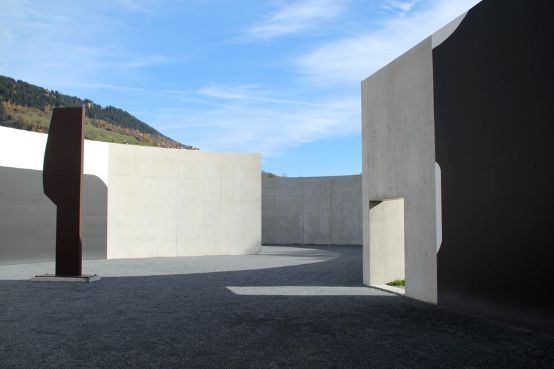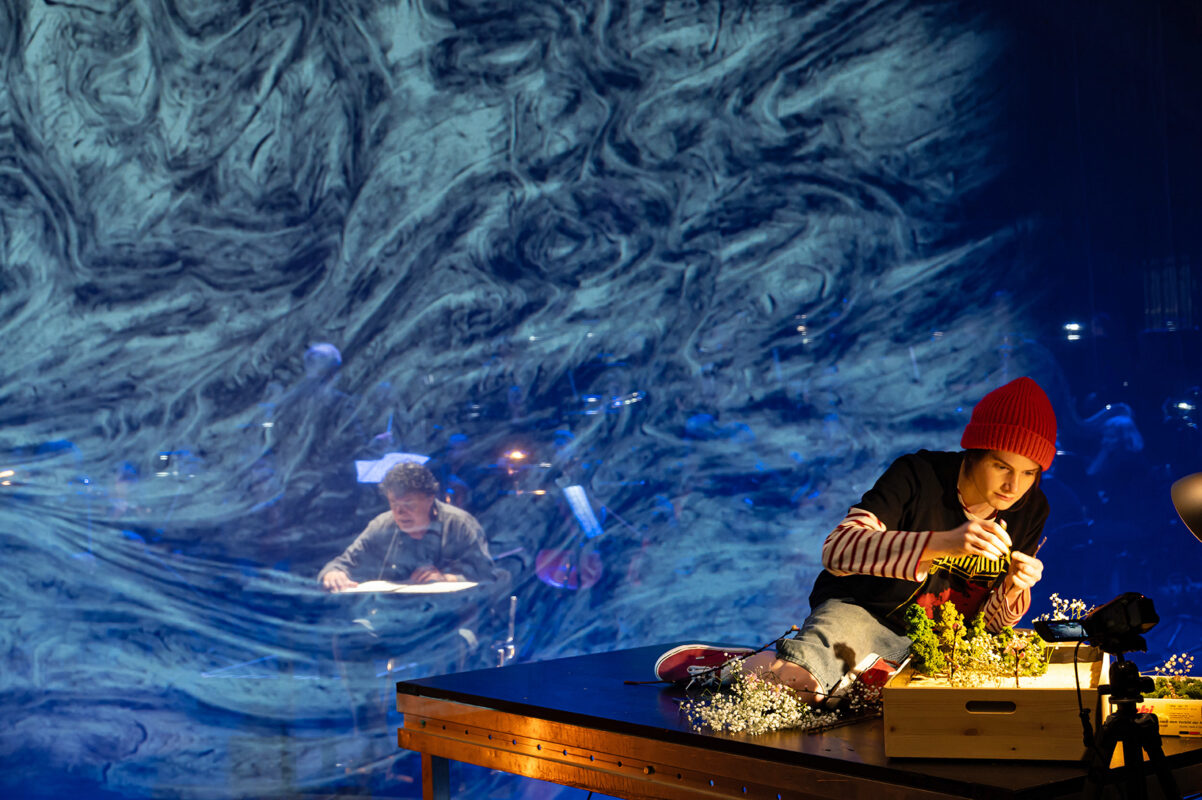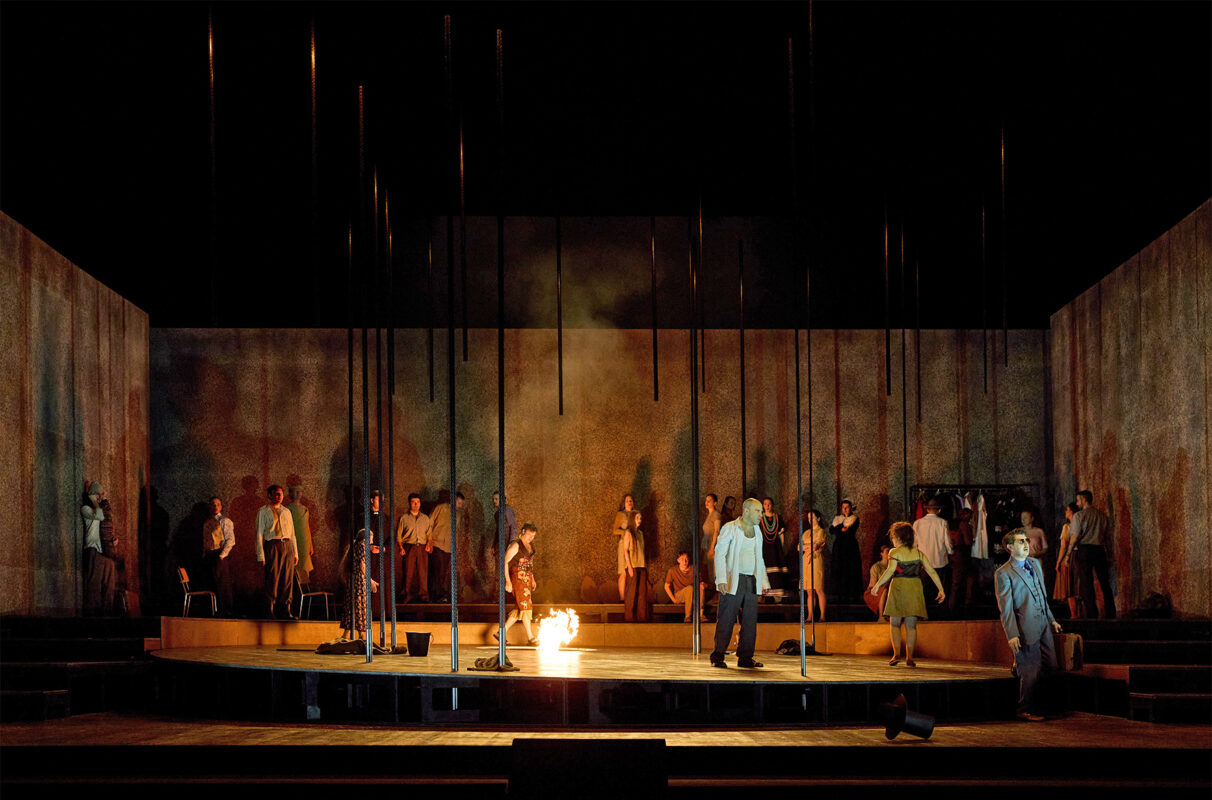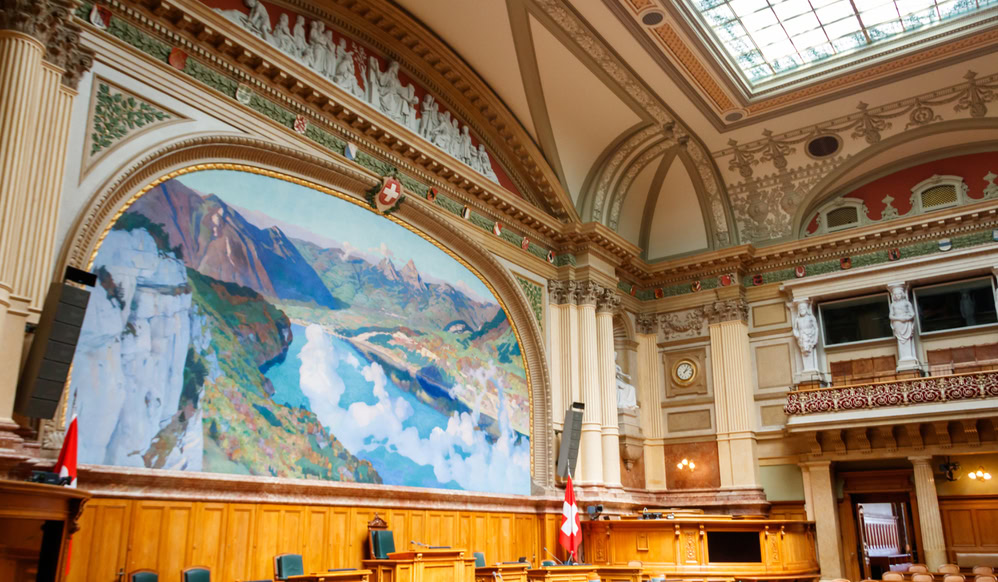A network of references
Thüring Bräm is the spiritus rector of the Valendas Music Days, which he directed for the last time this year. They impressed with their musical diversity, in-depth programming and charming, often little-known venues.

The Music Days in Valendas, Graubünden, took place for the tenth time from July 5 to 10. The festival, with the Altaun Chamber Choir under the direction of Thüring Bräm as a permanent fixture, this time also served as the annual event of the ars braemia association, which is dedicated to promoting Bräm's compositional work, among other things. The resulting synergies led to the expectation of a rich program, and indeed the stylistic, instrumental and not least spatial range of what was on offer was impressive. The festival motto "Er-Innerung" refers to a network of references that can be understood historically, spatially, stylistically and in part also as a reference to the history of the festival itself. Special emphasis was also placed on encounters with Walser and Romansh culture.
"Dark and light" was the motto of the first concert in Versam church on July 5. Late romantic, internalized music in the first half of the concert (Puccini, Elegy for string quartet, Pfitzner, four songs op. 33, Schoeck, three songs from op. 36) were contrasted in the second half with works of a more popular expressive style: Brahms' Four quartets op. 92 for mixed choir and piano, four songs from Elgar's Songs from the Bavarian Highlands and Bräm's 5th String Quartet Postcards from Switzerlandwhich was composed for the Lucerne Chamber Soloists in 2007 and uses well-known Swiss songs. The performers were Lia Andres, soprano, Peter Mächler, bass-baritone, the string quartet of the Lucerne Chamber Soloists, Thüring Bräm, piano, the Altaun Chamber Choir and Karel Valter, conductor.
The traditional "Brunnenkonzert" concert in Valendas brought together professionals and amateurs, locals and guests. The Altaun chamber choir was also open to newcomers that evening and performed songs in Swiss German, Romansh and English under the direction of Thüring Bräm.
"Back to the future" was the title of the third concert at the Museum Ilanz (which has probably only seemed a little paradoxical since the film of the same name), with the Ariadne myth as its point of reference. Ariadne for transverse flute and harp by composer Thomas Leininger (commissioned by ars braemia), born in 1981, draws on material from a prologue and epilogue to Georg Benda's melodrama Ariadne on Naxos and provides the performers (Karel Valter, traverso, Julia Wacker, harp) with a framework which is to be worked on in the spirit of 18th century musical practice. The Crown of Ariadne is a suite that takes up six images from the myth. The sound of the harp is expanded in Murray Schafer's composition from 1979 to include small percussion instruments and electronics from the band (Julia Wacker, harp).
The fourth concert "Spazi - Räume" opened up completely different sound spaces in the impressive Sumvitg Chapel (Capluta Sogn Benedetg) designed by Peter Zumthor. Haydn's String Quartet in F minor op. 20/5 formed a kind of bracket around the program, with the first and second movements played at the beginning, while the Adagio and the final fugue formed the end of the concert. The programmatic space in between was enlivened by Bräm's haunting Interior for violoncello solo from the 1st String Quartet of 1991 (Jürg Eichenberger, violoncello) and his newly composed 6th String Quartet Spaziwhich musically interprets the church space and two other spaces in the region and thus seeks to transfer an older world into a new one. The string quartet of the Lucerne Soloists acted as a convincing mediator here, while the Altaun Chamber Choir under the direction of Bräm gave a touching rendition of three chants from the Prophetiae Sibyllarum by Orlando di Lasso - songs that proclaim redemption and thus open up another spiritual "space".
The fifth concert, entitled "Walser Evening", took place in Tschiertschen church. The Walser poet Anna Maria Bacher, who lives in Pomatt near Domodossola, recited her own texts in Pomatt German and Italian. They combine introspection, observation of nature and spiritual experience to create poetry of extraordinary intensity. Some of Bräm's settings of Bacher's texts were presented by the Altaun Chamber Choir under the direction of the composer (as a world premiere Gibätt with Jürg Eichenberger, violoncello, and 3 songs from Bräm's Piccoli Madrigali). In these settings, the straightforward language of the texts finds a counterpart in tonal transparency and a mediating musical language that is not aimed at complexity. A special feature of Tschiertschen church is its historic organ, one of the last two playable house organs built by Heinrich Ammann in 1820. Hanspeter Aeschlimann played marches and dances from a collection from 1796, as they would have been played on this instrument at the time, and, as a profound counterpart, so to speak, four of Brahms' late chorale preludes (op. post. 122), whereby Aeschlimann's masterful rendition was a highlight of the evening. This spiritual music was complemented by three songs from Brahms' op. 22, Marian hymns by the young Protestant composer.
The last program (with pre-concert) juxtaposed "new and old", initially spatially; the pre-concert took place at the sculpture OGNA by Matias Spescha (1925-2008), the actual concert then in the hamlet of Acladira in the 17th century church Nossadunna della Glisch. While the previous concert was dedicated to the Walser sphere, this one was dedicated to Romanesque culture, represented by choral works by the two Surselva composers Carli Scherrer and Gion Balzer Casanova (both born in 1938), in which the traditional musical and religious tradition lives on (Kammerchor Altaun). In deliberate programmatic and stylistic contrast to this were Bräm's Ogna for four horns (horn quartet Jakob Hefti) and Mountain call for solo horn (Martin Roos), while the folk songs performed by the horn quartet mirrored the vocal movements in the instrumental. Works by Liszt, Derungs and Bruckner rounded off the program.
Overall, the Valendas Music Days offered a musical and spatial diversity and depth of programming that is second to none. Last but not least, it also provided a welcome opportunity to experience a selection of Bräm's oeuvre in concert. For Thüring Bräm, this year's edition also meant a farewell: at the end of the festival, he handed over the musical direction to conductor and flautist Karel Valter, who is very familiar with the Musiktage. It will be interesting to see how the festival develops in the future.
The next Valendas Music Days are scheduled for July 4-9, 2017. Information will be available from this fall at
The writer attended the concerts on July 8 and 9.








